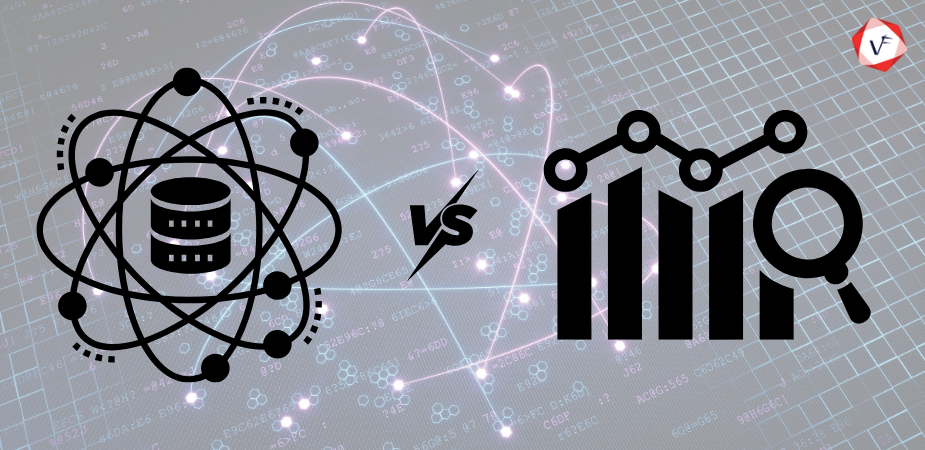These days, the integration of artificial intelligence (AI) and machine learning (ML) is reshaping how businesses perceive and implement IT strategies. The shift from a reactive to a proactive IT strategy isn’t just a trend—it’s a necessity. Organizations now require agility, foresight, and precision to stay competitive in an AI-driven world. This article explores the journey of IT strategy evolution, focusing on the transformative impact of AI, key methodologies, challenges, and future prospects.
The Traditional IT Strategy: Reactive by Nature
Historically, IT strategies have been inherently reactive. Businesses primarily relied on IT systems to address specific problems or respond to crises. This approach revolved around troubleshooting, system maintenance, and ensuring operational continuity. While functional, reactive IT strategies often led to inefficiencies, such as:
– Delayed Decision-Making: Without predictive tools, decisions were based on retrospective analysis.
– Higher Operational Costs: Emergency fixes and system downtimes often disrupted workflows.
– Limited Scalability: Reactive frameworks struggled to adapt to evolving business needs or market demands.
Although this model sufficed in a less complex business environment, the modern era—marked by globalization, rapid technological change, and heightened customer expectations—demands a more forward-thinking approach. Historically, traditional IT strategies were largely reactionary, addressing problems after they arose. This approach prioritized maintenance, troubleshooting, and short-term fixes over innovation and forward planning.
The Rise of Artificial Intelligence: A Catalyst for Change
Artificial intelligence has emerged as the driving force behind proactive IT strategies. By leveraging AI’s ability to process vast datasets, identify patterns, and predict outcomes, businesses can anticipate challenges, optimize processes, and make informed decisions.
The Key Drivers of AI Integration in IT Strategy include:
- Data Explosion: With exponential growth in data volumes, AI-powered analytics helps businesses extract actionable insights in real time.
- Automation: AI enables the automation of repetitive tasks, freeing IT teams to focus on strategic initiatives.
- Predictive Analytics: Tools like machine learning algorithms empower organizations to foresee potential system failures or security threats.
- Customer-Centricity: AI facilitates a deeper understanding of customer behaviors, enabling tailored solutions and better user experiences.
Proactive IT Strategy: Defining Characteristics in the AI Era
A proactive IT strategy shifts the focus from mere operational support to becoming a driver of innovation and competitive advantage. The following characteristics define such strategies:
- Predictive Maintenance and System Health Monitoring: AI-powered tools monitor systems continuously, identifying anomalies before they escalate. For example:
- IT Infrastructure: Predictive analytics detect server overload risks, ensuring timely optimization.
- Cybersecurity: AI tools analyze patterns to preemptively identify and mitigate potential breaches.
- Intelligent Automation: Routine tasks, such as software updates or network management, are automated using AI and ML algorithms. This reduces human error, enhances efficiency, and accelerates response times.
- Enhanced Decision-Making: AI provides data-driven insights to aid strategic planning. Whether it’s predicting market trends or evaluating the ROI of IT investments, AI ensures decisions are backed by evidence, not guesswork.
- Agility and Scalability: With AI-driven cloud solutions, businesses can scale IT resources dynamically to meet fluctuating demands, ensuring optimal performance without over-provisioning.
- Customer-Centric Innovations: AI helps businesses understand customer pain points through advanced analytics, enabling the development of innovative products and services tailored to evolving needs.
The Pillars of Building a Proactive IT Strategy
- AI-Driven Infrastructure: Modern IT strategy demands robust infrastructure capable of integrating AI tools seamlessly. Cloud computing, edge computing, and data lakes are pivotal in enabling AI capabilities at scale.
- Data Governance and Quality: The effectiveness of AI hinges on high-quality data. Organizations must implement stringent data governance policies to ensure data accuracy, relevance, and security.
- Workforce Upskilling: Transitioning to proactive IT strategies requires IT professionals skilled in AI and ML technologies. Offering regular training and fostering a culture of continuous learning are critical.
- Collaboration Across Teams: Proactive IT strategy thrives on collaboration between IT departments and business units. This ensures alignment between technological capabilities and organizational goals.
- Ethical AI Practices: As AI adoption grows, ethical considerations around data usage, bias mitigation, and transparency must be prioritized to maintain trust and compliance.
Challenges in Adopting Proactive IT Strategies
Despite its numerous advantages, transitioning from a reactive to a proactive IT strategy is not without challenges. These include:
- High Initial Investment: Implementing AI technologies and revamping IT infrastructure can require significant capital.
- Data Silos: Fragmented data systems can hinder seamless AI integration.
- Resistance to Change: Organizational inertia or reluctance to embrace new methodologies can slow adoption.
- Cybersecurity Risks: As reliance on AI grows, so does the potential for sophisticated cyber threats.
- Regulatory Compliance: Navigating the complex landscape of data privacy laws, such as GDPR, requires careful strategy.
Success Stories: Organizations Leading the Charge
Several organizations have successfully transitioned to proactive IT strategies, leveraging AI to drive growth and innovation:
- Netflix: By using AI-powered recommendation systems, Netflix anticipates viewer preferences, enhancing user satisfaction and retention.
- Tesla: The company’s AI-driven IT strategy underpins its self-driving technology, predictive maintenance systems, and smart manufacturing processes.
- Amazon: From warehouse automation to personalized shopping experiences, Amazon epitomizes how AI can transform IT into a competitive differentiator.
The Future of IT Strategy in the AI Era
The evolution of IT strategy is far from over. As AI continues to advance, the following trends are likely to define the future landscape:
- Hyperautomation: Combining AI with robotic process automation (RPA) to automate end-to-end business processes.
- AI-Driven DevOps: Leveraging AI to optimize software development cycles, from code generation to deployment.
- Real-Time Collaboration Tools: AI-enabled platforms facilitating seamless collaboration across global teams.
- Digital Twins: Creating virtual replicas of IT systems to simulate, test, and optimize performance.
- Green IT: Using AI to design energy-efficient IT operations, aligning with sustainability goals.
The Role of Cloud Computing in Proactive IT Strategy
Cloud computing serves as the backbone for many AI-enabled proactive IT strategies. By providing scalable, on-demand access to computing resources, cloud platforms allow businesses to integrate advanced analytics and AI applications without the constraints of traditional infrastructure. Key benefits include:
- Seamless Integration: AI tools like predictive analytics, intelligent automation, and natural language processing are often delivered as cloud-based solutions. This enables rapid deployment across diverse environments.
- Cost Efficiency: Cloud services follow a pay-as-you-go model, allowing organizations to allocate resources dynamically and minimize wastage.
- Enhanced Collaboration: Cloud-based platforms enable real-time data sharing, fostering better collaboration between IT and other departments.
- Disaster Recovery and Resilience: Cloud solutions provide robust data backup and disaster recovery systems, ensuring minimal disruption during crises.
How Proactive IT Strategies Enhance Cybersecurity?
In an era where cyber threats grow increasingly sophisticated, the importance of proactive IT strategies in cybersecurity cannot be overstated. AI’s role in enhancing cybersecurity includes the following:
- Threat Detection and Response: Traditional security systems often rely on predefined rules to detect threats. AI, however, uses behavioral analytics to identify anomalies that deviate from normal patterns, catching advanced persistent threats (APTs) and zero-day vulnerabilities early.
- Automated Security Operations: Security orchestration, automation, and response (SOAR) platforms leverage AI to automate repetitive tasks, such as log analysis and incident reporting. This frees up human analysts to focus on higher-order decision-making.
- Real-Time Risk Assessments: AI-powered systems can continuously evaluate the organization’s security posture, flagging weak spots before attackers exploit them.
- Fraud Detection: In industries such as banking and e-commerce, AI algorithms are employed to detect and prevent fraudulent transactions through advanced pattern recognition.
By integrating these capabilities into IT strategies, businesses can stay ahead of emerging cyber risks and ensure robust protection of their assets.
Proactive IT Strategy in Small and Medium Enterprises (SMEs)
While large enterprises often lead the charge in adopting AI-driven IT strategies, small and medium enterprises (SMEs) stand to gain significantly from proactive approaches as well. However, SMEs face unique challenges such as limited budgets, resource constraints, and slower digital adoption rates. Overcoming these hurdles requires:
- Leveraging SaaS Tools: Software-as-a-Service (SaaS) platforms provide affordable access to AI-powered IT tools, such as customer relationship management (CRM) systems and supply chain analytics.
- Partnering with AI Experts: Collaborating with AI and IT strategy service providers like Vofox can help SMEs implement tailored solutions without incurring prohibitive costs.
- Focusing on High-Impact Areas: Instead of overhauling entire IT systems, SMEs can start small by targeting critical pain points, such as customer service automation or inventory forecasting.
By adopting a phased, cost-effective approach, SMEs can leverage proactive IT strategies to achieve significant ROI.
The Competitive Edge of Proactive IT Strategies
In today’s hypercompetitive markets, the ability to predict and adapt to changes is a decisive advantage. Proactive IT strategies provide businesses with the following competitive benefits:
- Faster Time-to-Market: AI accelerates product development cycles, enabling businesses to launch new offerings ahead of competitors.
- Improved Customer Retention: Personalized experiences powered by AI foster stronger customer loyalty.
- Operational Resilience: Businesses with proactive IT strategies can weather disruptions, such as economic downturns or supply chain crises, more effectively than their reactive counterparts.
- Continuous Innovation: With insights derived from AI, companies can identify untapped opportunities, fueling a culture of perpetual innovation.
Final Thoughts
The journey from reactive to proactive IT strategies marks a pivotal transformation in how businesses approach technology management. AI and ML have redefined the rules of engagement, enabling organizations to anticipate challenges, innovate faster, and deliver exceptional value to stakeholders. However, achieving this requires not only technological investment but also a cultural shift towards agility, collaboration, and continuous improvement. For businesses looking to navigate this transformation, Vofox offers groundbreaking AI/ML development and IT strategy services. With expertise in building tailored solutions, we empower organizations to unlock the full potential of proactive IT strategies, ensuring they stay ahead in the AI-driven future. Reach out to learn more.





